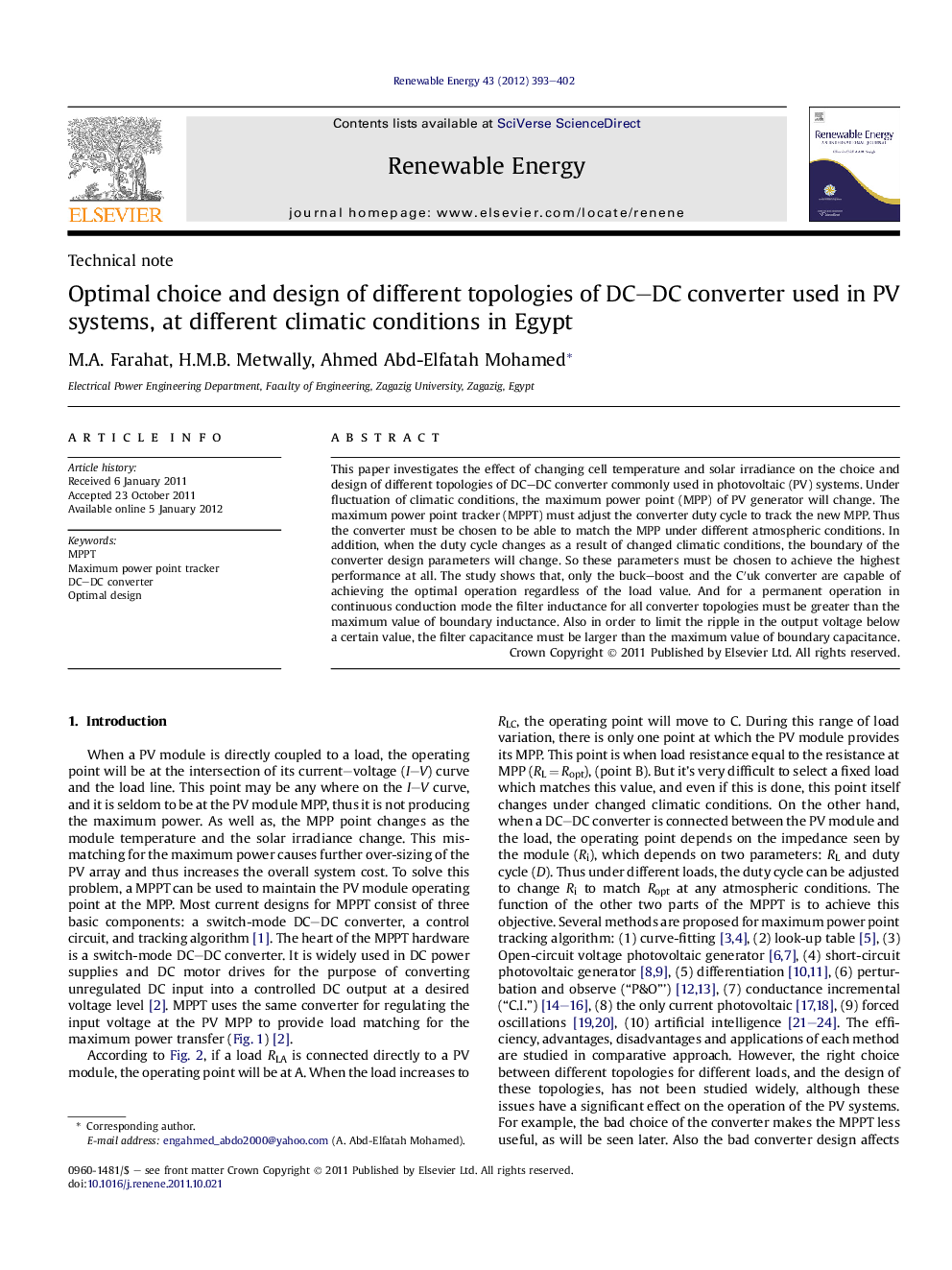| Article ID | Journal | Published Year | Pages | File Type |
|---|---|---|---|---|
| 301085 | Renewable Energy | 2012 | 10 Pages |
This paper investigates the effect of changing cell temperature and solar irradiance on the choice and design of different topologies of DC–DC converter commonly used in photovoltaic (PV) systems. Under fluctuation of climatic conditions, the maximum power point (MPP) of PV generator will change. The maximum power point tracker (MPPT) must adjust the converter duty cycle to track the new MPP. Thus the converter must be chosen to be able to match the MPP under different atmospheric conditions. In addition, when the duty cycle changes as a result of changed climatic conditions, the boundary of the converter design parameters will change. So these parameters must be chosen to achieve the highest performance at all. The study shows that, only the buck–boost and the C′uk converter are capable of achieving the optimal operation regardless of the load value. And for a permanent operation in continuous conduction mode the filter inductance for all converter topologies must be greater than the maximum value of boundary inductance. Also in order to limit the ripple in the output voltage below a certain value, the filter capacitance must be larger than the maximum value of boundary capacitance.
► The study discusses the different types of DC–DC converter commonly used in PV pumping systems. ► How to choose the appropriate type for different loads. ► Get the best design for each type. ► Discusses these issues under different climatic conditions in EGYPT.
